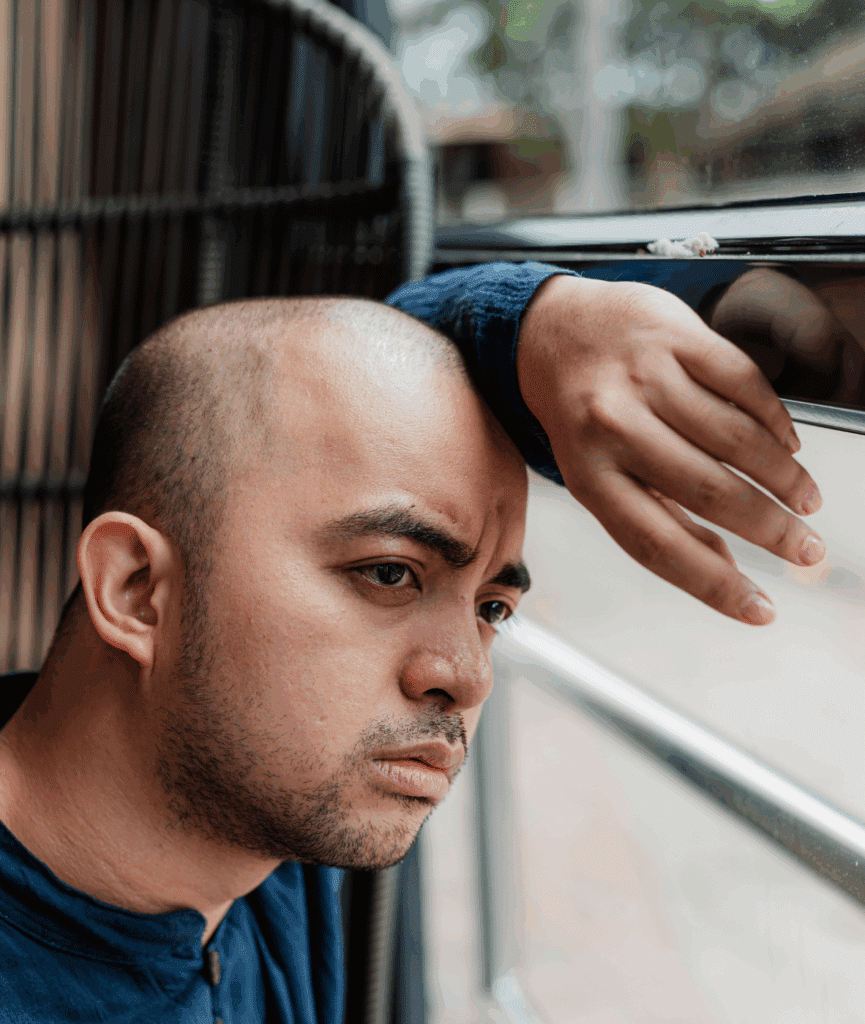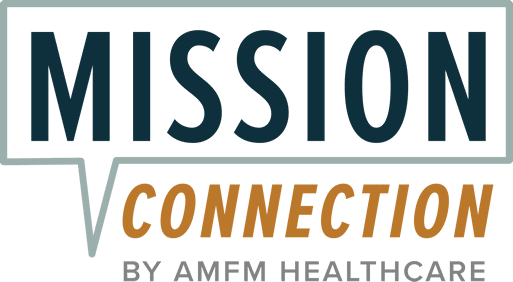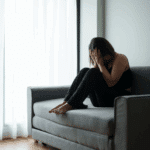Seasonal Affective Disorder: SAD Symptoms and How to Cope

Here’s a quiz-night challenge: How many gloomy weather phrases can you think of? “Under the weather,” “Left out in the cold,” “Snowed under”… the list can feel endless.
For centuries, we’ve tied bleak skies to low moods, but only recently have we recognized seasonal affective disorder (SAD) as a real, diagnosable condition. Put simply, it’s when we experience a form of depression when the seasons change, hence its other moniker “Winter depression.”
With the right support, SAD can be managed. Therefore, if you notice a drastic shift in your mood when the weather shifts, seeking professional support may be the best decision you could make for your well-being.
This page can also help, as it works as a guide for understanding SAD by covering:
- The signs and symptoms of SAD
- Why SAD occurs
- How prevalent SAD is
- The importance of SAD diagnosis
- Treatments that help with SAD
- Where treatment takes place for SAD
- Where you can find the help you need for SAD

What Is SAD?
What’s interesting is that while people have long linked weather with mood, SAD itself is a fairly recent entry into the medical world. The phrase itself first appeared in 1984, in a paper by Norman Rosenthal and his colleagues at the National Institute of Mental Health.1 This was the point when these seasonal mood changes finally got their name and recognition.
From this point, things moved quickly. Scientists started looking further into the body’s circadian rhythm, melatonin levels, and the way light (or the lack of it) can play a massive part in our moods.
So while comparing your mood with the weather isn’t anything new, SAD’s journey as a recognized condition is surprisingly recent and still evolving.
Next, we take a look at some of the signs and symptoms of SAD to help you determine whether this is something you experience.
The Signs and Symptoms of SAD
The following sections cover how SAD can manifest in Winter and Summer.
Winter-Pattern SAD
Winter SAD is the most common form of the disorder, often beginning in autumn and lasting until spring. It centres on low mood and low energy, with symptoms such as:
- Feeling persistently sad or irritable, sometimes crying frequently
- Tiredness and lethargy throughout the day
- Difficulty concentrating and reduced motivation
- Sleeping more than usual
- Withdrawing from social situations and lowering activity levels
- Craving carbohydrates and sugar
- Weight gain linked to overeating
Summer-Pattern SAD
A far less common form of SAD, Summer SAD emerges during the warmer months and looks very different from its winter counterpart. Instead of lethargy and cravings, the symptoms often revolve around restlessness and difficulty coping with heat and long days. For example, someone may experience:
- Irritability and heightened anxiety
- Poor appetite, often leading to weight loss
- Insomnia and disrupted sleep
- Agitation and persistent restlessness
- Episodes of extreme mood swings or even violent behavior
It’s also worth noting that not everyone experiences “full-blown” SAD. Some people deal with a milder version, often called “subsyndromal SAD” or simply the winter blues, which still can have an impact but doesn’t reach the same severity.
Why Does SAD Occur?
Serotonin Regulation Difficulties
Studies have found that people with SAD struggle to regulate serotonin, the neurotransmitter that helps balance mood.3 In the winter months, it’s been found that SERT (the protein that carries serotonin away once it’s been released) is around 5% higher in people with SAD. More SERT means less serotonin activity in the brain, which can trigger the low moods so often linked with this condition.
In summer, the natural boost from sunlight helps keep SERT levels lower, but when that light diminishes, so too does serotonin activity.
Melatonin Overproduction
Melatonin is a hormone that is produced to signal to the body that it’s time for rest. As winter days get shorter and darker, the body ramps up melatonin, which can cause people with SAD to feel unusually lethargic.4 While melatonin on its own can’t explain the whole picture, the way it increases during these months seems to heighten the symptoms that define SAD for many people.
Disrupted Circadian Rhythms
For those who don’t know, your circadian rhythm is your internal 24-hour clock. It tells your body when to feel awake and when to rest, syncing itself to the natural light and dark cycle of each day. For those with SAD, this rhythm can get disrupted when day length changes.5 Essentially, the brain misreads seasonal signals, leaving the body struggling to adjust. That mismatch is thought to deepen a sense of fatigue and low mood.
Vitamin D Deficiency
In the darker months, people naturally get less sun exposure on their skin, and with that comes a drop in Vitamin D production. Research suggests Vitamin D plays a role in serotonin activity, and deficiency has been associated with depressive symptoms.6
While we don’t yet have absolute proof that Vitamin D deficiency causes SAD, the link is strong enough that it remains a key area of ongoing research.
Genetic Influences
There’s also evidence that SAD runs in families, especially in twins.7 Studies looking at relatives of people with SAD have found higher-than-expected rates of the condition, with numbers ranging between 14% and 26%. Twin studies further solidify these results, suggesting that genetics could explain nearly a third of the seasonal shifts in mood.
While genes don’t tell the whole story, they may create a vulnerability that environmental factors, like low light, then bring to the surface.
How Prevalent Is SAD?
If you’ve never come across SAD before, it’s easy to brush it off as just having a few “off weeks” when the nights draw in. But SAD is more common than most people realize, and the number of cases can differ in certain countries and even by sex.
The following information aims to give an overview of the prevalence of SAD across certain countries, sex, and age.
- United States: Around 1% of people in Florida experience SAD compared to 9% in Alaska.2 The reason for these states being highlighted is simple: Florida gets consistent daylight year-round, while Alaska swings from endless summer daylight to long, dark winters, making seasonal contrasts much harsher.
- Canada: Roughly 15% of the population experiences the “winter blues,” with 2–6% living with SAD.2 The country’s northern position means extreme winter darkness in many regions, making Canadians especially vulnerable to seasonal mood changes.
- United Kingdom: Around 20% of people report symptoms of depression around the winter months, and 2% meet the criteria for SAD.2 The UK doesn’t have the extreme seasonal shifts of Canada or Alaska. However, the long stretches of overcast skies and short winter days may be enough to leave a sizable mark on people’s mood.
- Gender/Age: SAD occurs four times more often in women than in men, with onset usually between 18 and 30 years.2 Hormonal differences and the stresses of early adulthood may contribute to this higher prevalence.
What makes these figures even more concerning is that SAD often goes unreported and underdiagnosed. In other words, the true prevalence may be even higher than what the studies suggest.
Why a SAD Diagnosis Is So Important
If you’re from a country where the weather rarely changes, especially one that doesn’t get much sun, it’s easy to brush off SAD. You simply adapt to the grey skies and long stretches of bleakness, with it becoming part of daily life. Sometimes awareness can even turn into a casual self-diagnosis: “the weather’s grim today and so is my mood.” Because of these issues, many people wouldn’t think to go down the route of an SAD diagnosis.
But there are two main issues with this way of thinking. First, if you do have SAD, it’s a recognized condition that typically needs proper diagnosis and support from a healthcare provider. Second, low mood in certain seasons could also be a signal that something more complex is happening behind the scenes.
Bipolar and SAD
For around 12–22% of people diagnosed with SAD, the winter lows are a part of a wider bipolar pattern.8 In these cases, the dark months bring the familiar fatigue and low mood, but when spring arrives, the pendulum often swings the other way. This could be issues like hypomania or mania, with bursts of energy, little sleep, and sometimes risky behavior.
This doesn’t mean SAD “causes” bipolar or that bipolar “creates” SAD. Instead, it shows how the two conditions can overlap and why careful diagnosis matters. Both share the same depressive symptoms, and both are closely tied to disrupted body clocks and seasonal light changes. The difference is in what comes next: if the depression lifts into stability, it could mean unipolar SAD; if it lifts into mania, it could mean bipolar with a seasonal pattern.
If this is something you experience, taking note of these patterns and describing them to a healthcare provider can ensure that you get the right form of support.
What Treatments Help With SAD?
However, if you find yourself a little apprehensive about reaching out for support, knowing the treatment process can help alleviate these fears.
Here are the most common types of treatments used for SAD:9
Bright light therapy (BLT): Commonly used for treating SAD and involves sitting in front of a light box that mimics sunlight for around 30 minutes a day. It may sound a little unorthodox, but research has shown that this method eases SAD symptoms, with improvements often noticed within 2-3 weeks.- CBT-SAD: This is a form of CBT tailored for those suffering from SAD. The therapy helps challenge negative seasonal thoughts and has been found to provide long-lasting benefits
- Antidepressants: SSRIs are commonly used in the treatment of SAD, with bupropion being the only medication officially approved to prevent SAD when started in the autumn.
- Supplements: Low Vitamin D levels are common in people with SAD, and while research is mixed, maintaining healthy levels may support other treatments.
How Is Treatment Usually Given For Patients With SAD?
For most people diagnosed with SAD, treatment takes place in an outpatient setting. Therefore, you continue living at home while attending sessions for therapy or bright light therapy (BLT). It’s flexible, practical, and in many cases, this level of care is enough to keep symptoms under control.
However, when SAD is more severe, a standard outpatient plan may not provide the structure or support needed. This is when an intensive outpatient program (IOP) may be recommended. It has all the hallmarks of an outpatient setting, along with the benefit of several hours on set days of the week in a clinical environment.
Essentially, when possible, the need and focus when it comes to treating SAD is set on creating a stronger safety net without removing someone completely from their everyday life.
When Is An Intensive Program Recommended?
An IOP might be recommended in situations such as when:
- Symptoms are so persistent that daily responsibilities like work or family care become almost impossible to manage
- Someone has already tried outpatient therapy, light treatment, or medication, but hasn’t noticed much improvement
- Depression linked with SAD deepens to the point where life feels unmanageable
- The pattern of relapse is strong, with each winter hitting harder than the last
- Dark thoughts, including self-harm or suicide, start to appear, and closer support is needed, though not as much as required for full hospitalization
- When another mental health condition complicates the picture, such as anxiety that spirals in winter, or the use of substances to cope

Mission Connection: Support For SAD
If you’ve been diagnosed with SAD, you may be recommended or referred to an outpatient program where support can fit around your life. In some cases, this could mean being connected with a service like Mission Connection.
At Mission Connection, we provide outpatient options designed to help people manage SAD and other mental health challenges. Our intensive outpatient programs (IOP) and partial hospitalization programs (PHP) are available across the US, giving you the structure to heal while still living at home.
We regularly treat people managing conditions such as:
- Depression
- Anxiety
- Bipolar disorder
- Trauma
- ADHD
Treatments are built around evidence-backed therapies like CBT and DBT, alongside group sessions and family therapy, so support feels both effective and relatable. For added flexibility, we also offer telehealth options, keeping care consistent wherever you are.
If you or someone you love is struggling with SAD, reach out to Mission Connection today and take the first step toward brighter days.
References
The recent history of seasonal affective disorder (SAD). (2014). In Wellcome Witnesses to Contemporary Medicine (Vol. 51). Queen Mary University of London. https://histmodbiomed.history.qmul.ac.uk/witsem/vol51.html
Melrose, S. (2015). Seasonal affective disorder: An overview of assessment and treatment approaches. Depression Research and Treatment, 2015(1), 1–6. https://doi.org/10.1155/2015/178564
McMahon, B., Andersen, S., Madsen, M., et al. (2014). P.1.i.037 Patients with seasonal affective disorder show seasonal fluctuations in their cerebral serotonin transporter binding. European Neuropsychopharmacology, 24(Supplement 2), S319. https://doi.org/10.1016/s0924-977x(14)70506-1
Lewy, A. J., Lefler, B. J., Emens, J. S., & Bauer, V. K. (2006). The circadian basis of winter depression. Proceedings of the National Academy of Sciences of the United States of America, 103(19), 7414–7419. https://doi.org/10.1073/pnas.0602425103
Murray, G., Michalak, E. E., Levitt, A. J., et al. (2005). Therapeutic mechanism in seasonal affective disorder: Do fluoxetine and light operate through advancing circadian phase? Chronobiology International, 22(5), 937–943. https://doi.org/10.1080/07420520500263292
Anglin, R., Samaan, Z., Walter, S., & McDonald, S. (2013). Vitamin D deficiency and depression in adults: Systematic review and meta-analysis. The British Journal of Psychiatry, 202(2), 100–107. https://doi.org/10.1192/bjp.bp.111.106666
Ho, K. W. D., Han, S., Nielsen, J. V., Jancic, D., Hing, B., Fiedorowicz, J., Weissman, M. M., Levinson, D. F., & Potash, J. B. (2018). Genome-wide association study of seasonal affective disorder. Translational Psychiatry, 8(1), 1–8. https://doi.org/10.1038/s41398-018-0246-z
Roecklein, K. A., Rohan, K. J., & Postolache, T. T. (2010). Is seasonal affective disorder a bipolar variant? Current Psychiatry, 9(2), 42. https://pmc.ncbi.nlm.nih.gov/articles/PMC2874241/
- Munir, S., & Abbas, M. (2022). Seasonal depressive disorder. StatPearls Publishing. https://www.ncbi.nlm.nih.gov/books/NBK568745/






